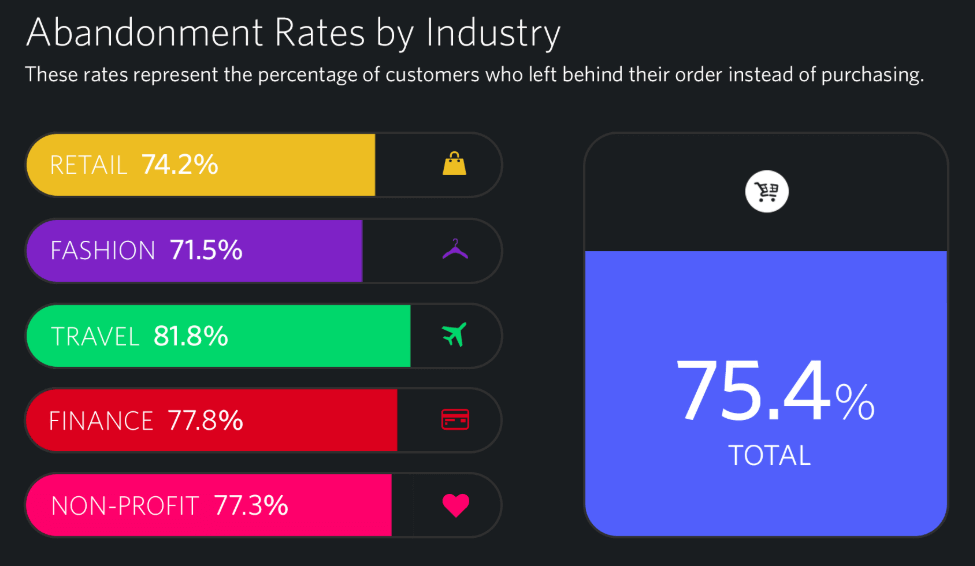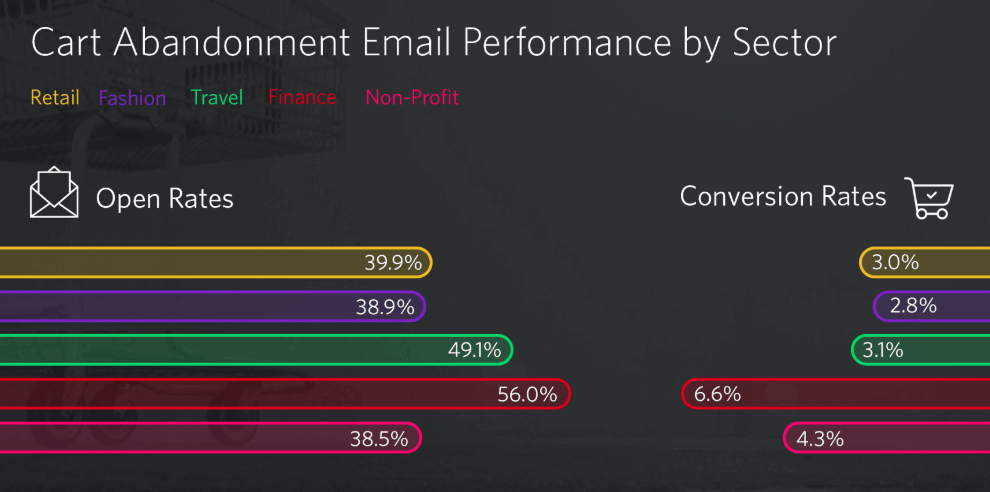Compilation of abandonment rates and follow-up email conversion rates in retail, fashion, travel, finance and not-for profit
We recommend retargeting as an essential activity in our RACE framework customer lifecycle activities. That's because it can help boost both conversion to lead and conversion to sale conversion rates. This pair of charts focusing on email retargeting show it's worthwhile putting a range of retargeting tactics in place, regardless of the type of business.
Cart abandonment rates
This data is based on abandonment rates from Salecycle customers. It shows that the average cart abandonment rate is 75.4% with rates in some sectors such as travel and finance being even higher.

Following up on this interest with a reminder email (if you have collected it, which you should) is one way of increasing conversion, using a simple reminder or a more persuasive discount. It's worth testing which discounts and timing for abandon emails work best. Here's some insight from a cart abandon test – it shows the importance of building in tests of timing and incentive. It’s an old example – VE Interactive / WH Smith, but certainly highlights the need to test:
1. Generic branded follow-up email : �+10% conversion rate.
2. Personalised remarketing email with a promotional code for a 5% discount time limited to 72 hours: �+100% conversion rate.
3. Personalised remarketing email with a promotional code for a 5% discount time limited to 48 hours: �+200% conversion rate.
Cart abandon email response rate
The next chart considers the open rates and conversion rates from emails sent to these abandons.

You can see that open rates are far higher than average due to the contextual nature of these emails (the customer has just visited the site). Conversion rates are similar to average, but using this data can be modelled to show the value of putting retargeting in place.
This research shows the impact of emails on retargeting, but remember that ad retargeting can also support conversion, whether it is via Google (their remarketing or RLSA), Facebook, Twitter, LinkedIn or via ad networks. So it's an essential retargeting technique, both for these types of businesses and other sectors where a visit to a product or service page or piece of content marketing rather than a basket abandon can indicate product interest and intent to buy.
Research source








